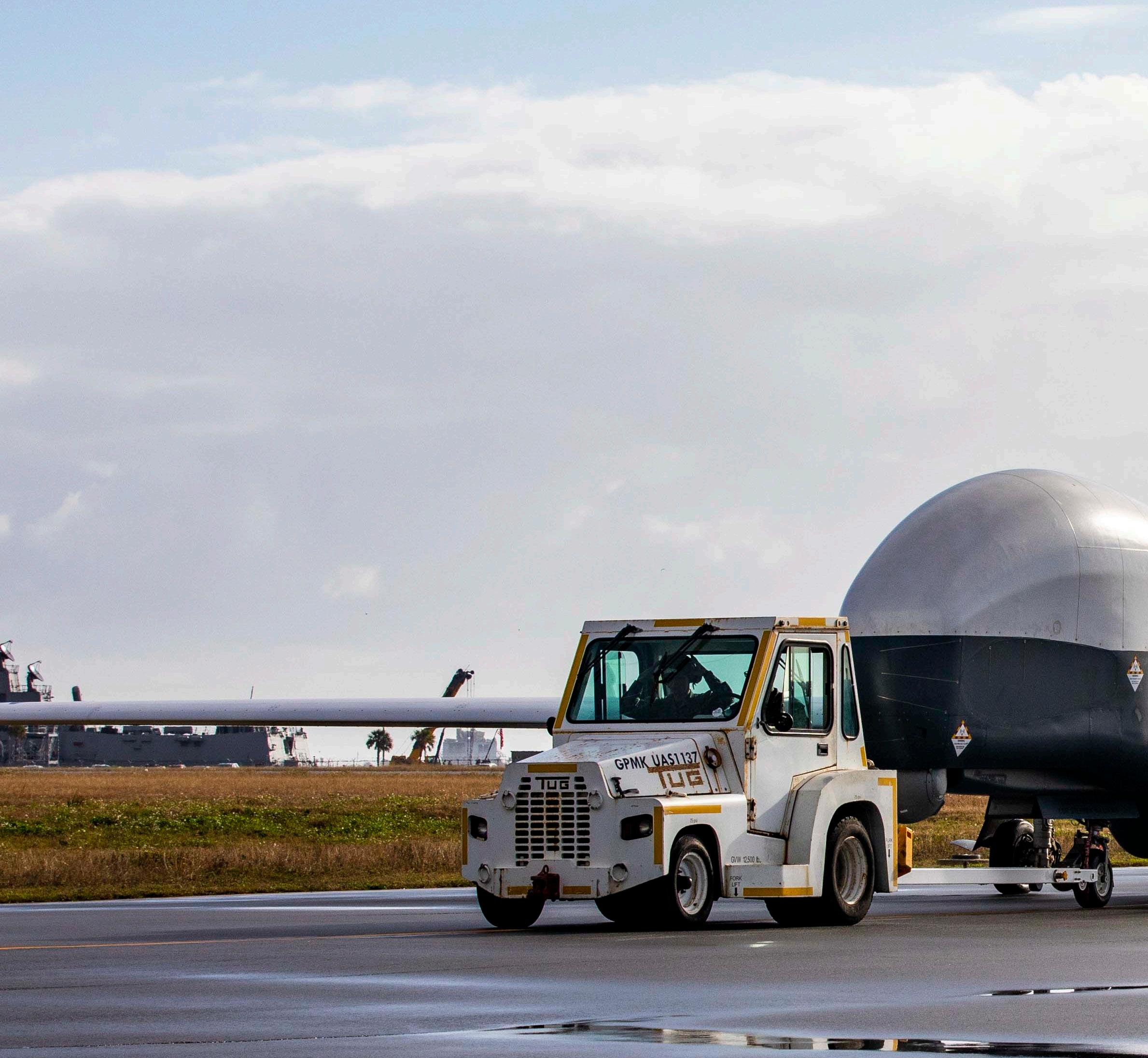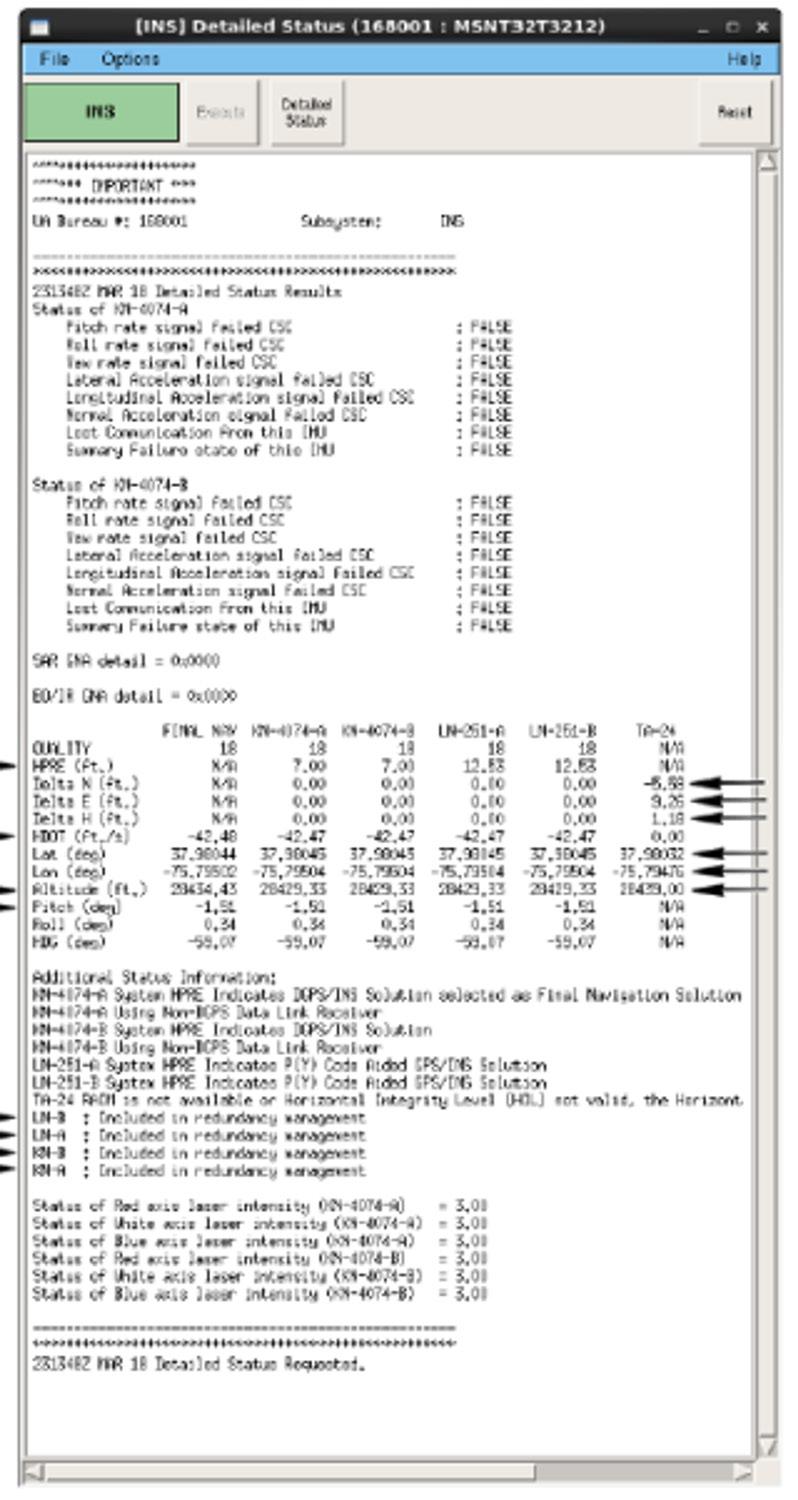
7 minute read
Ergonomics and the future of aviation
By Lt. Bartley O’Toole, VUP-19
When one thinks of ergonomics, often the first thoughts are of office settings, such as the height of a chair, how closely someone is sitting to the computer screen or the shape of the keyboard and mouse. These are all examples of classic ergonomic office concerns. Merriam-Webster defines ergonomics as “an applied science concerned with designing and arranging things people use so that the people and things interact most efficiently and safely.”
As naval aviators, individuals often disregard the importance of ergonomics in their workplace and think of ergonomics almost entirely as it relates to comfort on the ground. However, based on the definition above, ergonomics is actually rooted in the idea of efficiency through safety. For most individuals this idea applies to office settings; however, in aviation this concept is a crucial part of safe and successful mission execution. The seven principles of display design address the manner of an aircraft’s cockpit design and arrangement, as well as the information and its legibility as it relates to the safe operation of the aircraft (Tsang, Vidulich 2003).
The MQ-4C Triton is unique in that it is an unmanned aerial vehicle (UAV), and as such, it has the ergonomic needs of both an aircraft and an office setting. While not all seven principles of display design apply to MQ-4C operation, those that do play an important role in the development of future unmanned aerial systems.
The principle of information need rests on the idea that the amount of information given to pilots should be just enough to perform the operation or procedure safely (Tsang, Vidulich 2003). Too little information leaves the pilot guessing, while too much information causes error through task saturation or information overload. Regarding the MQ-4C, the latter is normally the issue. This premise stems from the MQ-4C being built based on the RQ-4 Global Hawk, which is often referred to as a generation one, or early generation UAV. This means the aircraft has an inability to think for itself during an emergency. When the MQ-4C senses a malfunction, due to its inability to pinpoint the exact cause of the malfunction, the aircraft simply shows the fault code for each affected component. This often leads to what is known as a cascading fault, where one specific system failure will trip multiple – often 10 or more – fault codes, or master warning/master caution lights.
U.S. Navy photo by Mass Communication Specialist 2nd Class Nathan T. Beard
When this occurs, the pilot must cycle through each of the fault codes individually in an attempt to find and diagnose the source malfunction. This series of events can lead to an incorrect initial diagnosis of the malfunction or delayed procedure completion as many of the more serious malfunctions are illuminated in yellow, while some of the less serious malfunctions are often illuminated in red. See Example 1.
Example 1


Example 2

The principle of legibility is another concern on the MQ-4C. When a malfunction occurs, many checklists call for the pilot to check the associated detailed status. The pilot completes this by using a mouse to select the malfunctioning system and execute a detailed status pull. Once this is done, a new page appears on the screen with the textual data associated with that system. The data is written in computer code that the pilot must decipher. Furthermore, this tedious task may lead to a loss of situational awareness and can be a hindrance regarding crew resource management. See Example 2.
Display integration, proximity compatibility and pictorial realism are all issues associated with the MQ-4C, especially regarding the Engine/LCS (liquid cooling system) Status display. This display is a snapshot of how the engine is operating.
In most modern aircraft, the engine temperature gauge has associated colors depending on the temperature of the assessed component. The MQ4C’s inlet turbine temperature (ITT) status display is a tape-style depiction with no color association. Instead, it simply shows up as dark gray, regardless of the ITT’s temperature. This makes it difficult for pilots to spot an impending engine malfunction or over-temperature. See Example 3.
Example 3

Regarding the principle of the moving part, the MQ-4C is unique. Traditional aircraft give you a constant representation of the aircraft’s altitude, attitude and pitch. As the MQ-4C is unmanned, all display information is sent from the aircraft to displays via a wideband satellite communication link, which means there is a delay of one to five seconds between what the operator sees and what the aircraft is actually doing. This delay creates the illusion that the aircraft is “stepping” between altitudes, when the aircraft is actually in a constant climb or descent. This is especially troublesome when communicating with air traffic control (ATC) during takeoff, departure and arrival.
Predictive aiding is also a constant battle during MQ-4C operation. Since the UAV is operated using satellite communication, pilots must continually think how the aircraft will perform in case they “lose link,” or the ability to command the UAV. When this happens, the UAV will fly a pre-loaded route to attempt to reach its landing field. However, this also means pilots can no longer see where the aircraft is on their maritime tactical displays (MTD).
The MTD displays the UAV’s Contingency 1, or Lost Link route, but pilots must use time and distance calculations based on the true airspeed the aircraft was flying when the loss of link occurred. This can be very difficult, especially when attempting to communicate aircraft position while on an oceanic clearance outside ATC radar coverage. Once the aircraft is within UHF line of sight range, the pilots usually regain link with the aircraft, and the position will once again be displayed on the pilot’s MTD. This usually occurs about 200 nautical miles, or 230.15 miles, from the destination airfield.
The last principle, the principle of discriminability, is also applicable to the MQ4C. Much of the information required to safely operate the MQ-4C is not readily available to the pilots. For instance, if a master warning or master caution pertaining to the engine system annunciates, the pilot must click the ENG button on the subsystem status display, execute an ENG detailed status and then scroll through the material for the desired information. This can lead to incorrect malfunction diagnoses or delayed checklist completion. This also takes the pilots’ focus away from the most important aspect of handling an emergency, which is to aviate. For

Example 4

this reason, while the MQ-4C was designed as a single-piloted UAV, the current Naval Air Training and Operating Procedures Standardization (NATOPS) and standard operating procedure (SOP) guidance requires a minimum of two pilots to operate the UAV at all times, Example 4.
The examples illustrate the crucial role ergonomics play in safely and effectively operating UAVs. Although the MQ-4C Triton reveals multiple ergonomic flaws, the discovery of these drawbacks has led to implementing multiple mitigations to combat these shortcomings.
Some of the precautions are procedural (NATOPS and SOPs), such as requiring multiple pilots to operate the UAV. Other implementations included a more extensive upgrade process and more simulator events for unmanned aircraft commanders. The MQ-4C is a milestone in the future of naval aviation, but the completion of milestones often goes hand in hand with steep learning curves. More often, the U.S. Navy is using UAVs in the maritime environment, and by studying the effect of ergonomics on UAS employment, we can ensure future generations of UAVs are better able to carry out crucial missions safely and effectively.
U.S. Photo by Mass Communication Specialist 2nd Class Nathan T. Beard










